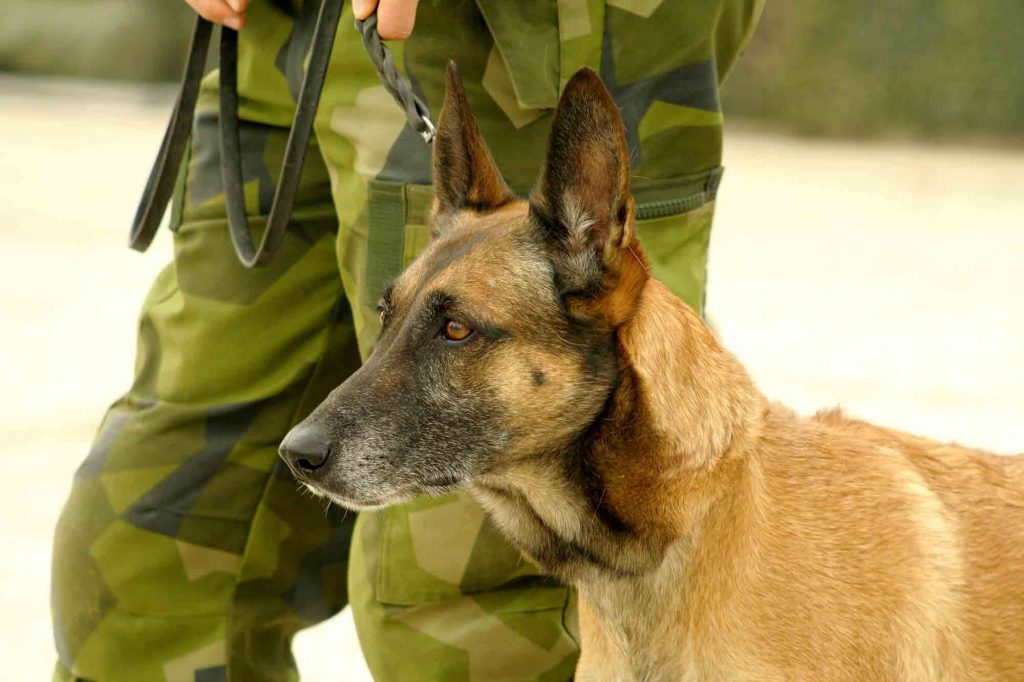 Dogs are famous for their incredible sense of smell. Not only do they have more receptors in their noses than we do, but the part of a dog’s brain that processes scent is much larger than ours. Of course, this gives them an edge when tracking or detecting, but when used in tandem with their equally phenomenal sense of hearing, dogs are an absolute boon to military operations.
Dogs are famous for their incredible sense of smell. Not only do they have more receptors in their noses than we do, but the part of a dog’s brain that processes scent is much larger than ours. Of course, this gives them an edge when tracking or detecting, but when used in tandem with their equally phenomenal sense of hearing, dogs are an absolute boon to military operations.
In large part, their skills are a result of formal training by – and recognition of – the military in war efforts since World War II. Canine veterans have bravely served and sacrificed for our country and, like their human handlers, have earned a highly regarded place in history.
K-9 Corps
Canine veterans are part of a highly trained group of dogs that have worked tirelessly to assist and protect our troops overseas. While dogs have been employed in strategic defense for centuries, their roles in modern warfare are unparalleled.
Specialized Skills
Dogs assisted as messengers in World War I, later working with the Red Cross to locate survivors on the front lines. The Military Working Dog program we know today was developed in WWII after dogs began formal training to work with soldiers in the field performing certain tasks, such as:
- Sentry
- Scout (these amazing dogs detect the enemy from distances of up to 1,000 yards, decreasing potential ambushes and casualties)
- Patrol
- Messenger
- Mine detection (were trained to find booby traps, trip wires, and land mines)
- Casualty (search and rescue)
Over 30 breeds were initially chosen to train, but modern military working dogs typically include German shepherds, Belgian Malinois, Dutch shepherds, and various retrievers. Many other dog breeds have also served as military dogs, including Jack Russell terriers, schnauzers, poodles, huskies, and more.
Canine Veterans Today
Dogs continued to earn their stripes after WWII and joined soldiers in Korea and Vietnam. The War on Terror brought about the need to train dogs to smell and detect explosives on a person, inside a package or vehicle, or on the side of a roadway. Hundreds of explosive detection dogs have been deployed to Afghanistan and Iraq.
National Support
While it’s heartbreaking to consider, before the year 2000, military working dogs who could no longer serve due to age or injury were typically euthanized. That year, President Clinton signed Robby’s Law, which eliminated this practice and encouraged adoption to private citizens or previous handlers.
Today, these special dogs are “non-commissioned officers,” placing them above the rank of their handlers who are responsible for their health and wellness. The bond between the dogs and their handlers is largely responsible for reducing stress, anxiety, and fear. Some canine veterans also find their way into police work or other engagements that use their specialized training and skills.
We’re proud of all veterans, but canine veterans continue to earn a special place in the hearts of our veterinarians and staff. As always, please let us know if you have any questions!

